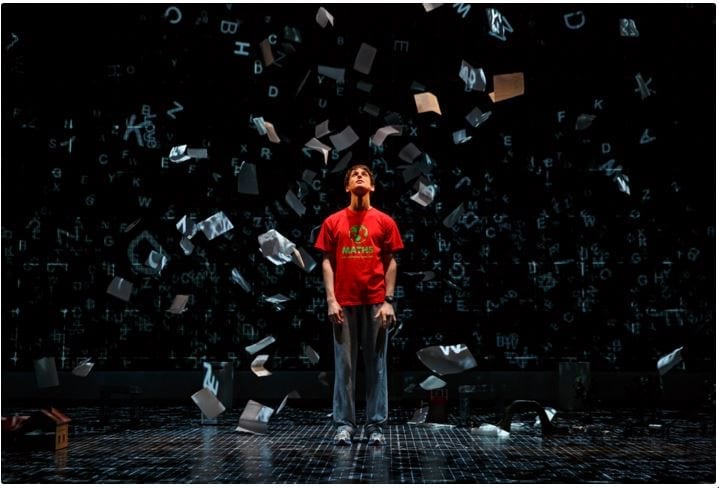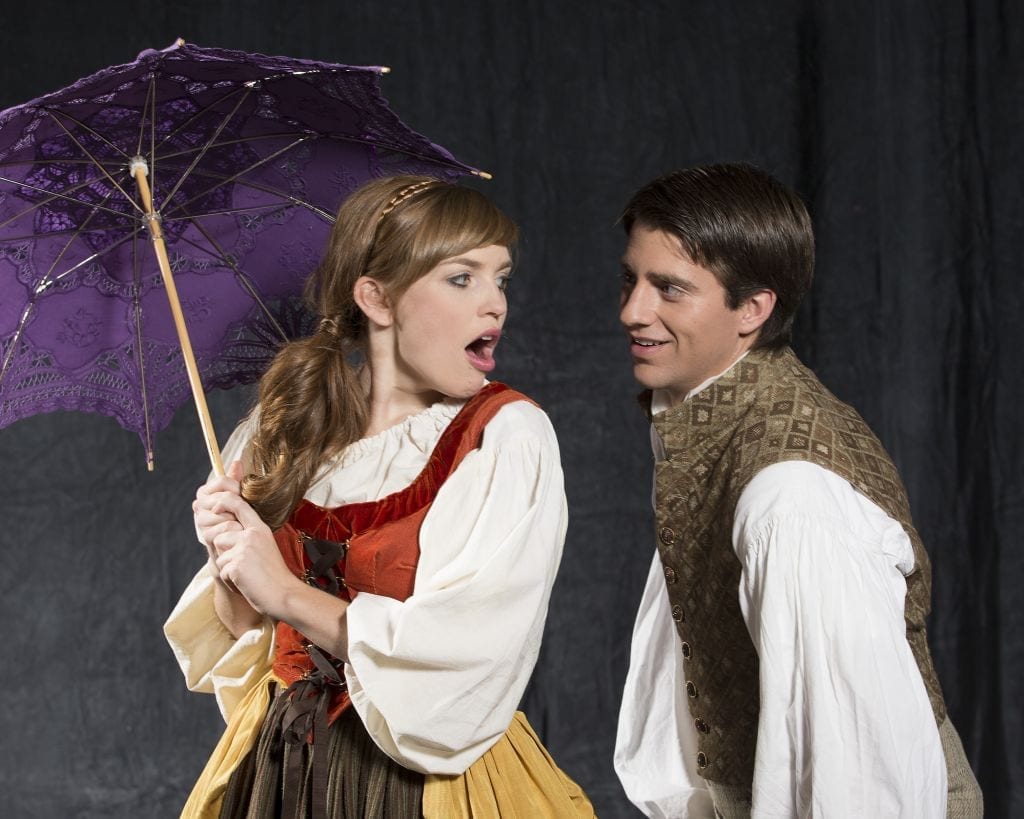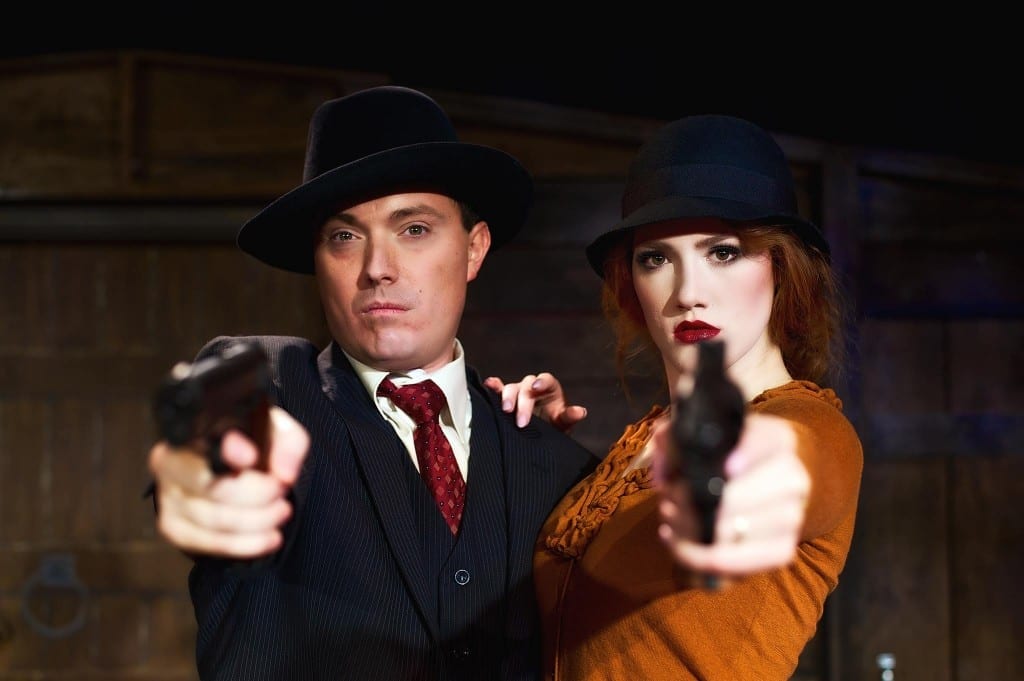NEW YORK CITY — In a multimedia era, the theatre continues to live on because of what it provides audiences that no other art form does: a communal experience of attending a play, the immediacy of watching an actor in the same room transform his- or herself into a role, and the immersion into a new world. But many recent Broadway shows are merely live action versions of popular films. This trend of aping another art form defeats the entire purpose of creating live theatre because it ignores the unique magic that only a play can provide. But one show on Broadway provides the type of experience that causes people to fall in love with live theatre: The Curious Incident of the Dog in the Night-Time.
 The main character of the play, Christopher Boone, is a 15-year-old boy with an autism spectrum disorder (and possibly a sensory processing disorder, too). Christopher finds people difficult to handle because they lie, speak in metaphors, and won’t leave him alone. When Christopher discovers that his neighbor’s dog has been murdered, he undertakes “an investigation” to determine who committed the crime. This determination pushes Christopher to face his fears and test the limits of his abilities—and disabilities—in order solve the mystery.
The main character of the play, Christopher Boone, is a 15-year-old boy with an autism spectrum disorder (and possibly a sensory processing disorder, too). Christopher finds people difficult to handle because they lie, speak in metaphors, and won’t leave him alone. When Christopher discovers that his neighbor’s dog has been murdered, he undertakes “an investigation” to determine who committed the crime. This determination pushes Christopher to face his fears and test the limits of his abilities—and disabilities—in order solve the mystery.
With Utah having the highest documented autism rate in the country, I suspect that many of my readers will demand a high level of realism from Simon Stephens’s script (based on a novel by Mark Haddon). Thankfully, Stephens ensured that Christopher is not defined by his disability. Rather, he is an inquisitive boy and a sympathetic character who happens to think differently than most of the population. For example, when trying to find a route to a train station that he has never visited before, Christopher relies on an algorithm to reach his destination. A person without autism would find the method inefficient and time consuming, but Christopher understands that his method guarantees that he will find the train station, even if he he doesn’t know where it is. Little quirks like this are in every scene, and the result is a remarkably believable character at the centerpiece of an engaging play.
Thankfully, Tyler Lea delivers an impeccable performance as Christopher, with every action and line infused with the mannerisms and habits of thinking that define autism. I enjoyed how Lea showed Christopher’s intense concentration (like when playing with his train set or watching the scenery outside the train) and his determination to solve his mystery or take his math exam. Lea also gave Christopher a naive innocence as he struggled to understand the social world, which made me want Christopher to accomplish his goals.
Playing the role of Ed, Christopher’s father, Andrew Long was fascinating. At first, Ed appears to be a stand-offish single father who has difficulty bonding with his son because of the latter’s disability. But Long showed that actually Ed loved his son (such as towards the end of the first act when he helps Christopher clean up) and that the disability merely has forced Ed to show his love in different ways. I also appreciated how Long realistically showed the frustration that parents of children with autism have, such as when Christopher wouldn’t make eye contact when spoken to or when he would leave the house without telling his father. These moments added complexity and nuance to the father-son relationship and made Long’s performance weighty without being flashy.
Rosie Benton provided another impressive performance as Siobhan, a paraprofessional at Christopher’s school. Siobhan serves as Christopher’s liaison to the surrounding world, and she helps him understand why people act in ways that are difficult for the overly logical Christopher to understand. In Stephens’s script, Siobhan is also the voice of Christopher’s thoughts, and the way Benton delivered her lines (full of lists and detailed explanations of Christopher’s ways of processing the world) was often comfortingly hypnotic. Benton made Siobhan a reassuring presence in the play, and it was clear why Christopher trusted her completely.
It’s almost unfair to single out these three performers because the other seven cast members were all compelling in their roles. Nancy Robinette turned the role of Mrs. Alexander, Christopher’s elderly neighbor, into a highlight of the evening with her sweet compassion and tender concern for Christopher. Mercedes Herrero was always attention grabbing, whether in the role of the bitter Mrs. Shears (the title dog’s owner) or as the humorously deadpan Mrs. Gascoyne. Despite individually laudable performances, the cast also had moments (such as in the London train station or the subway) where individual identities faded away, and the performers moved and acted in one accord, creating a beautiful physical poetry on stage.
At the heart of this innovative play, though, was the directorial vision of Marianne Elliott, who succeeded in providing an insight into the experiences of people with autism. Elliott harnessed her technical team to show how Christopher got overwhelmed by the constant bombardment of sight and sound from the world around him. The dizzying projections (by video designer Finn Ross) and the chaotic sound design (by Ian Dickinson) were crucial in Elliott’s efforts to give the audience an understanding of Christopher’s inner world. Indeed, one evening of watching Curious Incident provided me with more insight into the lived experiences of people with autism than several years of professional reading as a psychologist have.
But Elliott’s directorial vision extended beyond disability awareness to good old fashioned theatrical spectacle. The deceptively simple set (designed by Bunny Christie) was delightful throughout the evening, whether it served as a backdrop for the projections, a surprise storage facility for props, or a surface for Christopher’s chalk art. But Elliott didn’t need technology to create visually interesting moments. Christopher’s fantasy of being an astronaut and the rhythmic movement of the ensemble in the train station (with choreography by Scott Graham and Steven Hoggett) were undeniably eye catching.
Because of cultural and taste differences between New York City and Utah, sometimes UTBA readers feel that the Tony Awards are given to the “wrong” shows. But with five Tony Awards (including Best Play, Best Direction of a Play, and two technical awards), I can attest that the Tony nominators and voters got the decision right this year with The Curious Incident of the Dog in the Night-Time. This play will be personally relevant to many readers, though potential ticket buyers should be aware that there is some strong language in the script that adds to the realism, but which some audience members will find unnecessary (especially for children 14 and under). However, this play is such an important window into the world of autism that a handful of harsh words is a small price to pay for the lessons that this show can teach audiences.











